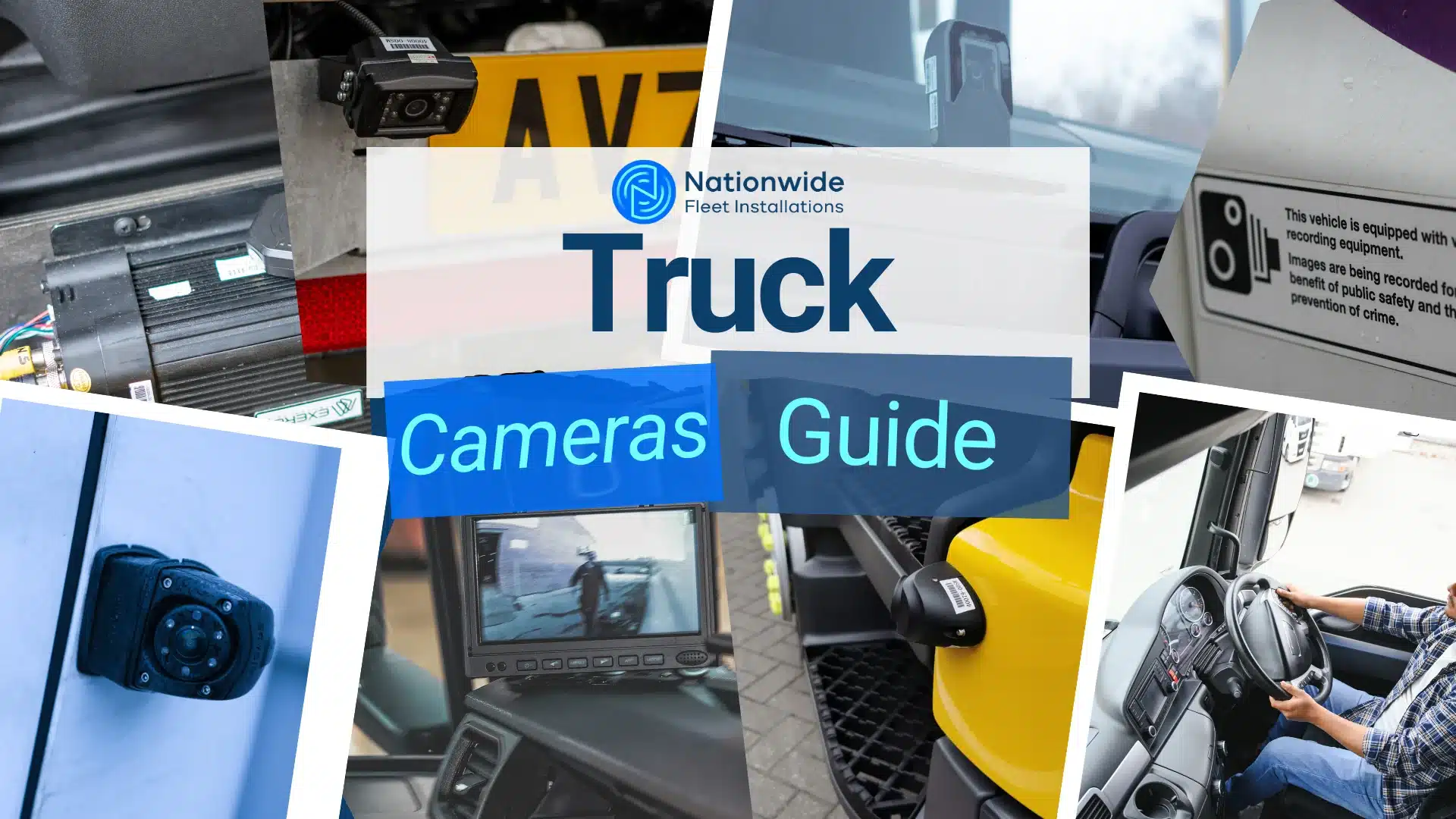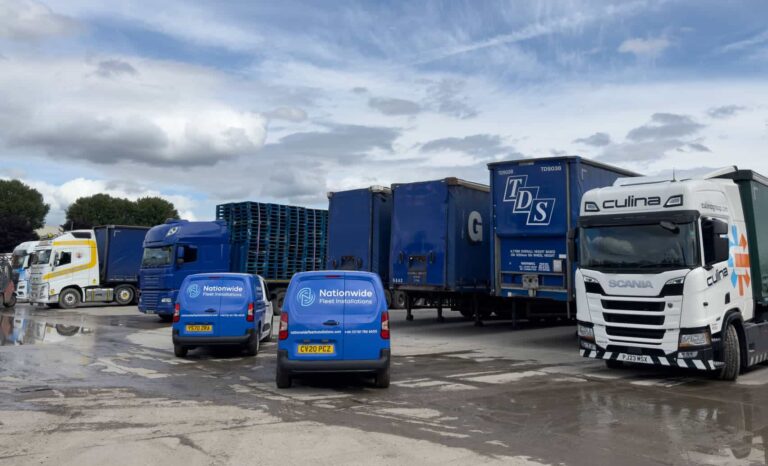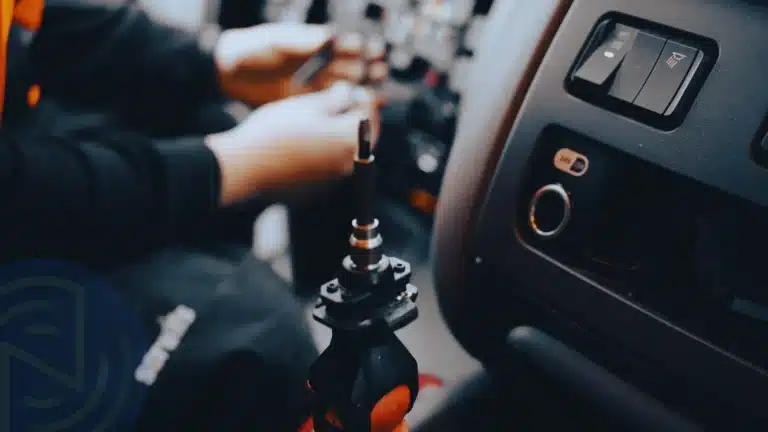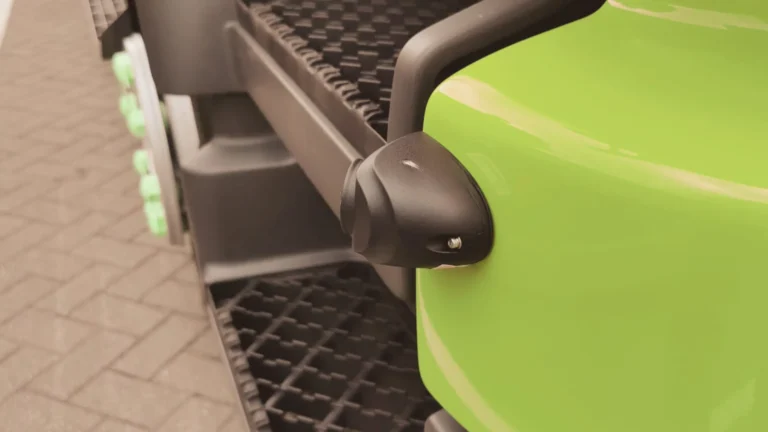One of the most sought-after solutions by fleet operators is truck camera systems. We examine why camera systems for HGV are becoming a must for fleets. Camera technology is proven to support drivers and operators in day-to-day use, with both parties taking advantage of the vast array of different features.
Why Truck Cameras Are Important
Commercial truck cameras are important to fleets in several ways:
Safety
HGV camera systems enhance safety in multiple areas: road safety, operability, and the well-being of the driver and surrounding road users. This is especially crucial, as various government data, including a report from Campaign for Better Transport shows that HGVs make up 12.2% of vehicle traffic on motorways but are involved in 41% of fatal accidents.
Source: Campaign for Better Transport
Additionally, according to Euro NCAP:
“Due to their size and weight, HGV crashes are the most severe on European roads. Although trucks account for less than 3% of the traffic fleet in Europe, they are responsible for 15% of accident fatalities.”
Source: Euro NCAP
These statistics highlight why any technology that improves the safety of HGVs, especially cameras, is essential. Below are some of the ways truck cameras help improve HGV safety:
Reduce Blind Spots
Commercial truck cameras reduce blind spots. Large goods vehicles have areas of limited visibility due to their size and shape, and they lack traditional rear-view mirrors. According to National Highways:
“Trucks have 4 zones of limited vision and are often considerably longer, heavier and more powerful than standard vehicles, needing more consideration.”
Source: National Highways
Camera systems enable drivers to check these blind spots when operating the vehicle. They also increase viewing angles, eliminating blind spots and giving a comprehensive view.
Manoeuvrability
Certain manoeuvres when operating trucks, such as turning (particularly turning right), overtaking, reversing, and moving off, are risky and can become potentially fatal situations. Other road users overtaking or tailgating also affect HGV drivers. Camera systems help drivers to manoeuvre safely, allowing visibility of blind spots and the presence of other road users.
- Reversing: According to the Health and Safety Executive, reversing is one of the most dangerous manoeuvres, and “nearly a quarter of all deaths involving workplace transport occur during reversing.”
Source: HSE
Camera systems assist drivers to reverse safely and can also warn other road users about the driver’s intention to reverse, thus reducing accidents.
Driver Behaviour
Research shows that driver behaviour has a significant impact on road safety. Camera systems help monitor driver behaviour, giving fleet operators insight into how vehicles are being driven, the road conditions and what drivers go through on a daily basis. They can use the insight to understand the data and make informed decisions. With HGV cameras, operators can see driving styles, identify distracted driving, and gather data that can be used to coach, reward, or alert drivers. A recent study by the University of Nottingham found:
“HGV drivers drive much more safely when there are cameras in their cabs monitoring their behaviour.”
Source: Mirage News
Ultimately, this helps prevent accidents.
Crash Avoidance
Camera systems also form part of crash avoidance systems used by HGVs. In these systems, cameras and radar sensors monitor the road and traffic environment around the HGV for critical situations. If the driver does not react to an imminent collision (e.g., with another vehicle, pedestrian, or cyclist), Autonomous Emergency Braking (AEB) can automatically intervene to warn the driver and slow the vehicle to prevent the collision.
Aiding Limitations of Vehicle Design
When vehicle design itself cannot be changed (especially for trucks already on the road), camera systems can still significantly improve fleet safety. Retrofitting safety equipment like truck cameras is a cost-effective method of improving safety compared to investing in entirely new vehicles. This is particularly beneficial given the rising costs in the transport and haulage sector.
Legal
Truck camera solutions can help fleet operators and drivers comply with legislation and provide evidence in legal cases.
Protect Against Crash-for-Cash Schemes
Fraudsters target HGVs in “crash-for-cash” scams, deliberately causing or staging accidents. HGV drivers are especially prone due to longer hours, time pressures, and the distances required to stop large vehicles. Camera systems can capture video evidence that identifies the vehicles involved and their number plates, which is very helpful because these scams can lead to injuries, fatalities, and large insurance claims.
Exoneration
Truck cameras are essential if your vehicles are involved in an accident. Where there are false accusations or wrongful blame, HGV cameras can exonerate drivers by providing footage as evidence.
Compliance
Over the years, camera systems have become an important part of compliance. Fitting camera systems to your trucks will help with:
- Direct Vision Standard (DVS)
Vehicles with a rating of less than three stars (or unrated) must be fitted with a “progressive safe system” before a permit can be granted. This means trucks over 12 tonnes must have a camera-monitor system. Mirrors, cameras, and sensors should also be fitted. - Fleet Operator Recognition Scheme (FORS)
The Fleet Operator Recognition Scheme (FORS) provides an independent review of fleet operations against a progressive framework of safety, environmental, and efficiency requirements. To comply with FORS, vehicle safety equipment including cameras is required. The specific FORS Standard requirements for vehicle safety equipment are: Bronze V6, Silver S6, and Gold G3 (Sustainable operations).
Wellbeing of Drivers
Truck cameras can offer peace of mind for drivers by recording events and providing evidence in case of wrongful accusations. Being falsely blamed for an accident can have serious psychological impacts on drivers, so cameras help reassure them that there is objective proof of their innocence if needed.
Environmental
Truck camera systems can also help reduce the environmental impact of fleet operations.
Reduced Drag
In some cases, truck camera systems improve aerodynamics compared to traditional mirrors, potentially leading to fuel savings.
Driver Behaviour
Driving behaviours such as excessive speeding, harsh braking, and harsh cornering use excessive fuel. Camera systems can help monitor and encourage safer, more environmentally friendly driving.
Security
Camera systems allow drivers to monitor their surroundings and keep an eye on load areas to prevent theft. In recent years, the value of losses from goods stolen from lorries has risen by almost two-thirds to £111.5 million. With the ever-increasing threat of clandestine entrants and the fines that come with it, truck cameras are vital in detecting clandestine activity and aiding drivers to report this
Source: Fleet News
Driving for work can sometimes result in drivers being alone for long periods of time. As a result, lone drivers are at a higher risk of violence, theft, or other incidents, particularly in less-populated areas or during late hours. Fleet managers can also keep track of drivers to ensure their safety.
Financial
Reduced Insurance Premiums
HGV camera systems can reduce fleet insurance costs both directly and indirectly. Because the safety benefits of truck camera systems typically reduce accident frequency, they can lead to lower insurance premiums. Some insurers may not reduce premiums immediately, but installing cameras demonstrates proactive fleet risk management. Over time, this investment helps speed up the claims process, improves safety, and can thereby reduce premiums.
Types of Truck Cameras
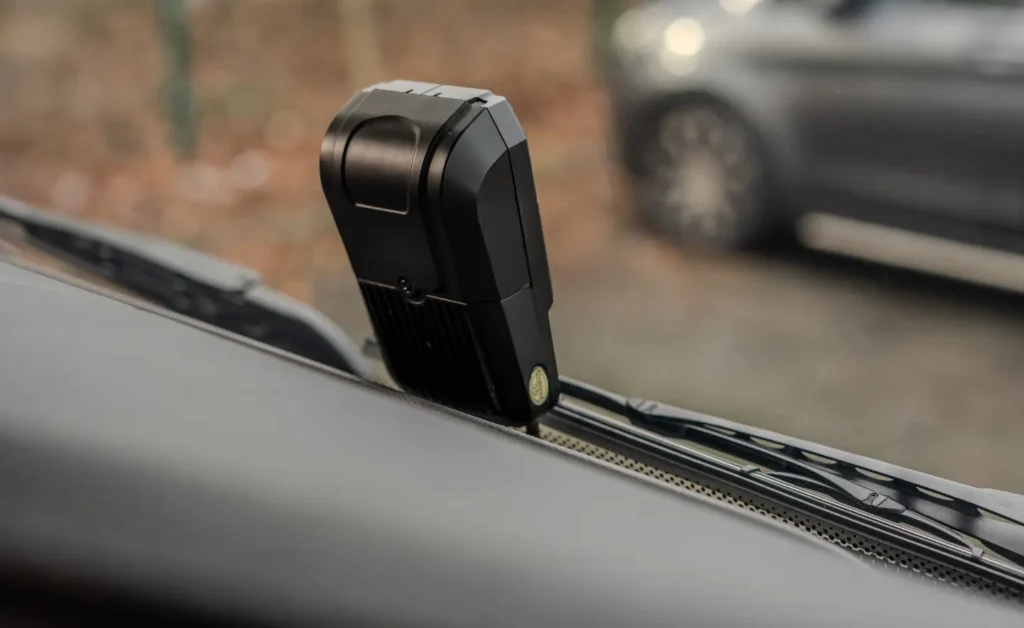
Forward-Facing Cameras / Dash Cameras
Fitted on the windscreen, dash cams provide a forward-facing view of the road and supply evidence in the event of a crash. These single-channel systems have multiple uses, including proof of delivery. Various forward-facing camera models are available, with capabilities for multiple angles, audio recording, and 4G streaming.
In-Cab Cameras / Driver-Facing Cameras
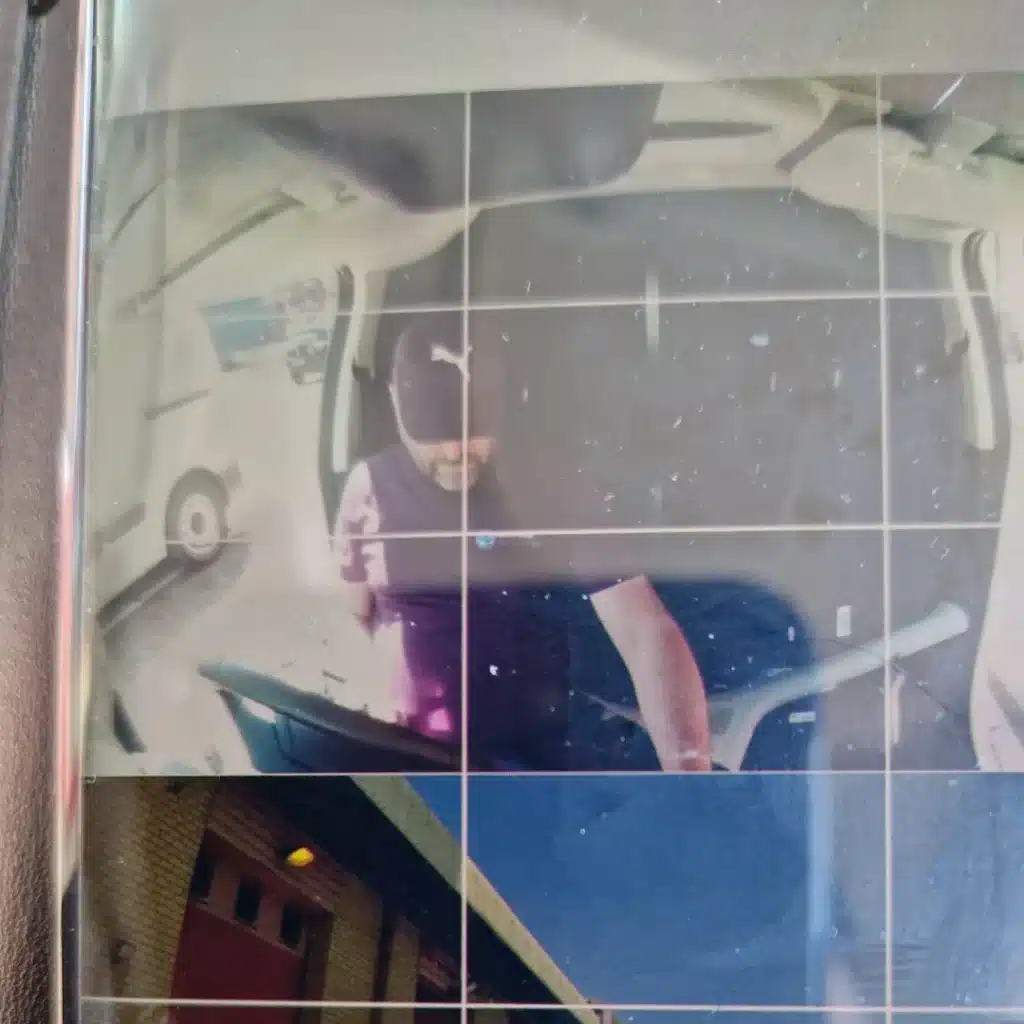
Mounted inside the cab to record internal activity, these cameras assess driver behaviour. Often, there are multiple channels, one looking ahead and another at the driver, identifying distractions. These cameras can be controversial if managed poorly; however, clear communication and policies can help ensure successful implementation.
Moving-Off Cameras (MOIS)
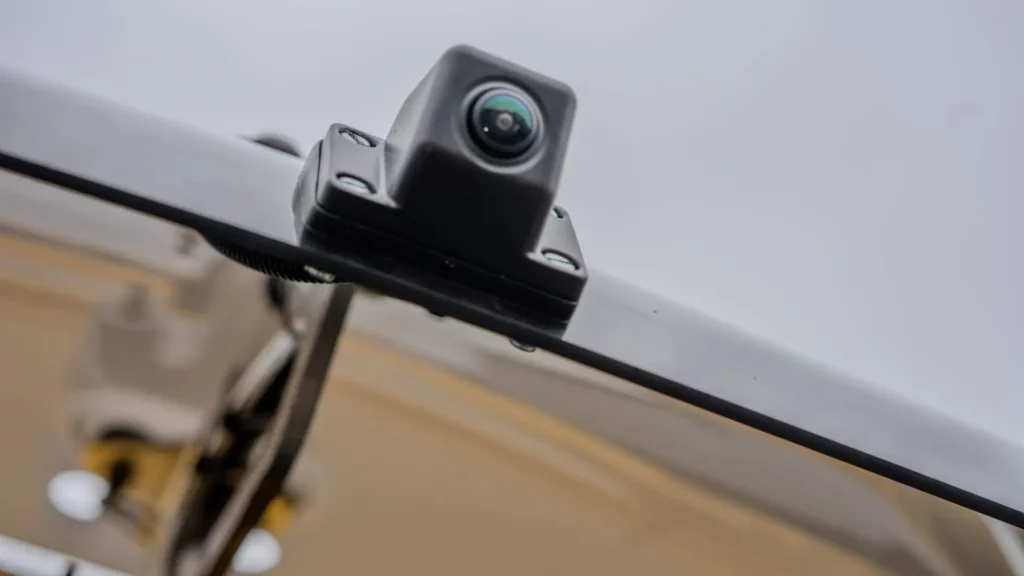
Due to vehicle design, the very front of a truck is often a blind spot. Vulnerable road users, such as cyclists and pedestrians, can be invisible if they are directly in front of the vehicle. Moving-off information system (MOIS) cameras show and alert the driver if a road user is in front of the HGV. MOIS cameras are essential for trucks operating in busy urban environments.
Blind Spot Cameras
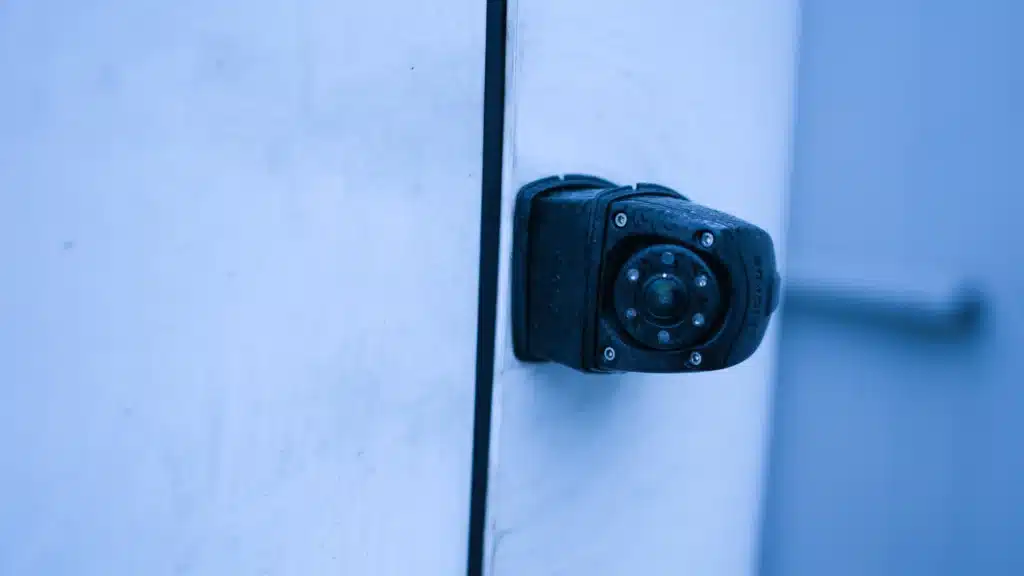
Also known as side-view cameras, these are mounted externally to help the driver manoeuvre and eliminate blind spots around the vehicle. They are especially useful when turning, as they provide a clear view down the side of the truck, helping identify any road users present before making the turn.
Load Bed Cameras
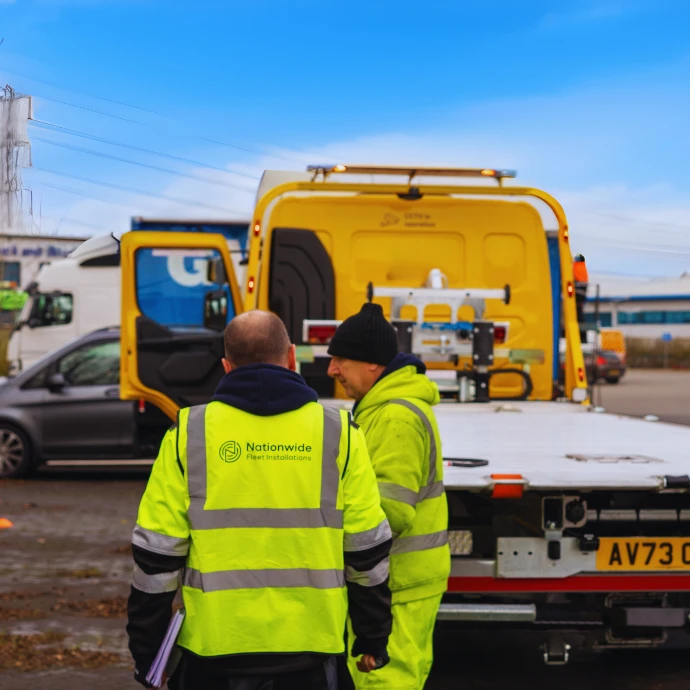
Sometimes called cargo cameras, these allow drivers to view the truck’s load bed area. They are often used by breakdown vehicles, tipper trucks, and transport sector companies to monitor cargo. They can also be used to identify unauthorised persons, theft or stowaways. HGVs (Heavy Goods Vehicles) are a common route for stowaways attempting to enter the UK illegally.
Reversing Cameras
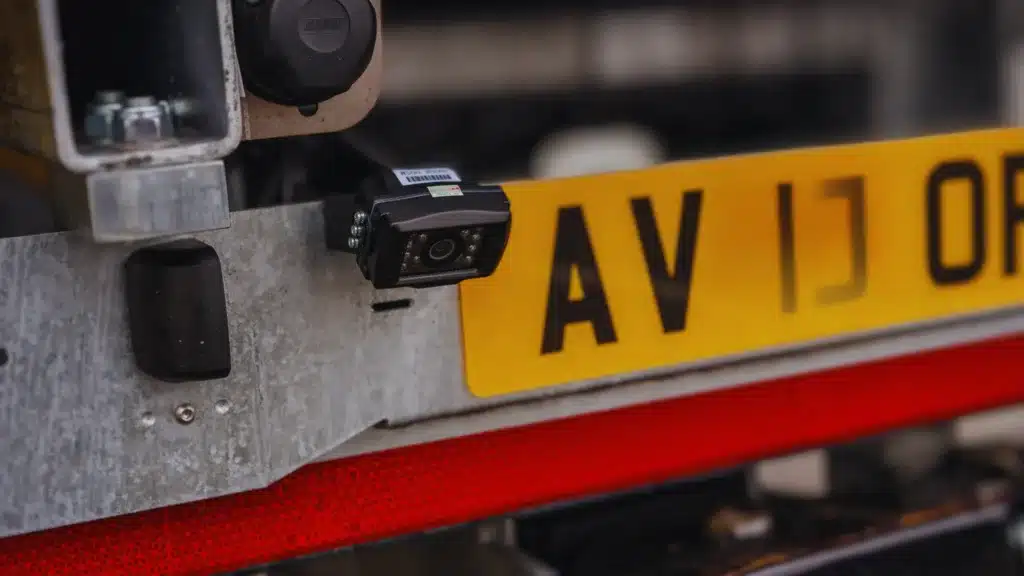
Truck reversing cameras enhance visibility when reversing, providing a clear view of the rear of the vehicle. They often come with on-screen guidelines to help drivers park or reverse into loading bays accurately. They can also be used while the vehicle is in motion to show what is behind.
360° Cameras
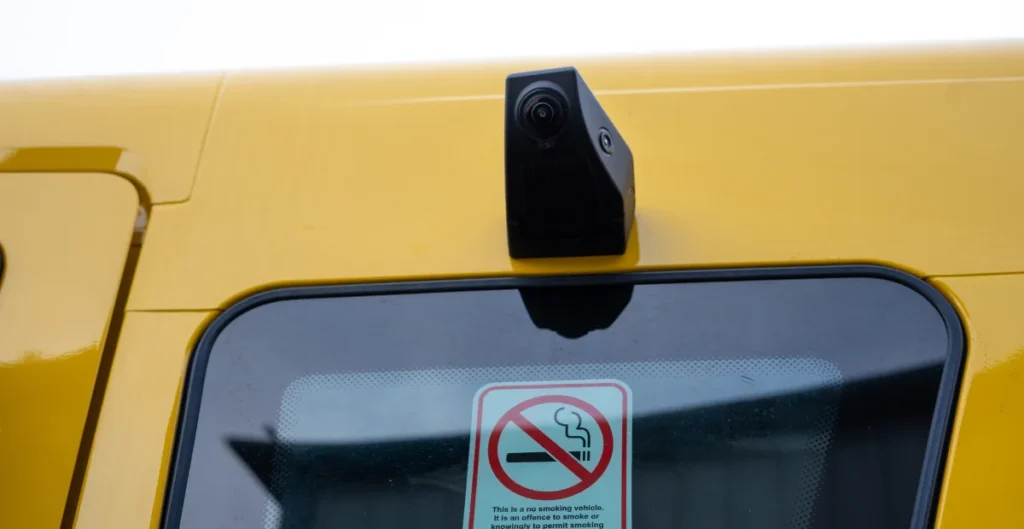
A 360° camera system provides a ‘bird’s eye’ view of the vehicle and its surroundings by using multiple camera angles. This greatly helps manoeuvring in tight spaces and busy urban areas. Such systems can include wide-angle or fisheye lenses to cover all blind spots.
HGV CCTV
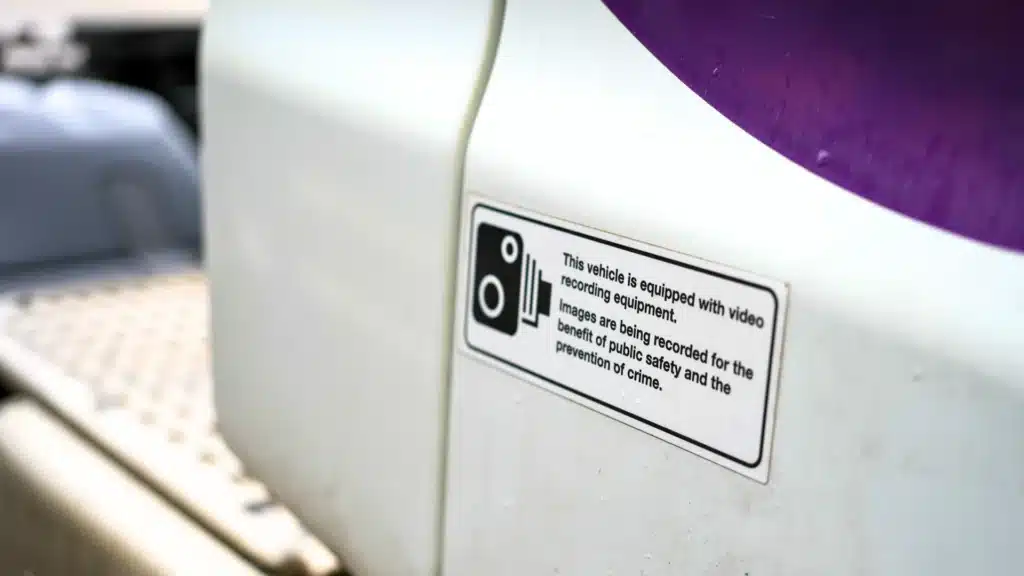
Vehicle CCTV (or HGV CCTV) uses multiple camera angles for a comprehensive view of the vehicle. These can range from four to seven (or more) cameras, limited only by the digital video recorder’s (DVR) number of channels. Such systems benefit drivers and fleet managers, who can remotely access the footage.
Other Technologies
Camera Monitor Systems
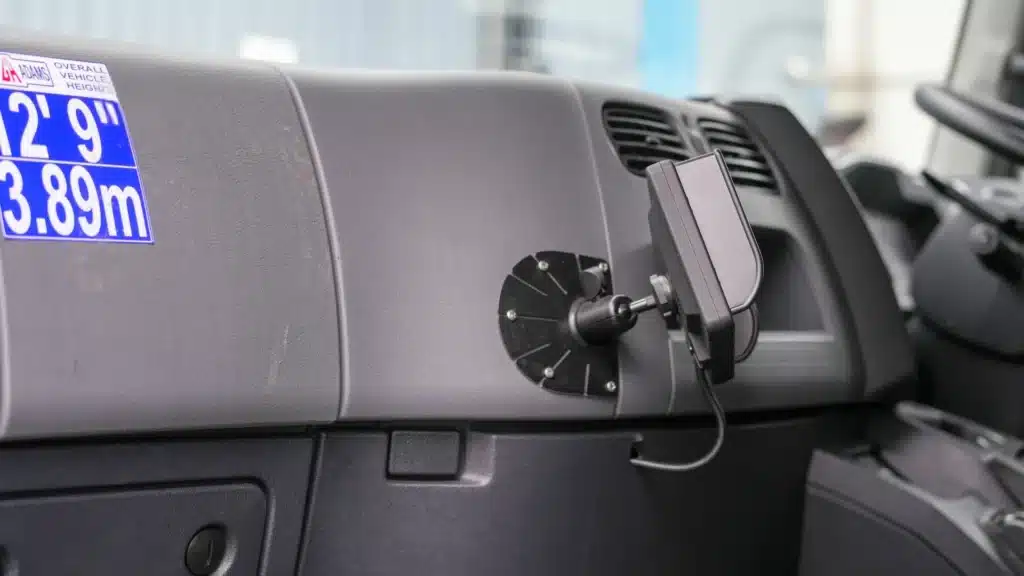
Fitted in the cab, camera monitor systems display camera output to the driver, effectively integrating all camera feeds in one place. They come in different screen sizes and can offer multiple viewing modes, helping the driver gauge proximity to objects and road users without relying solely on mirrors.
DVR/MDVR
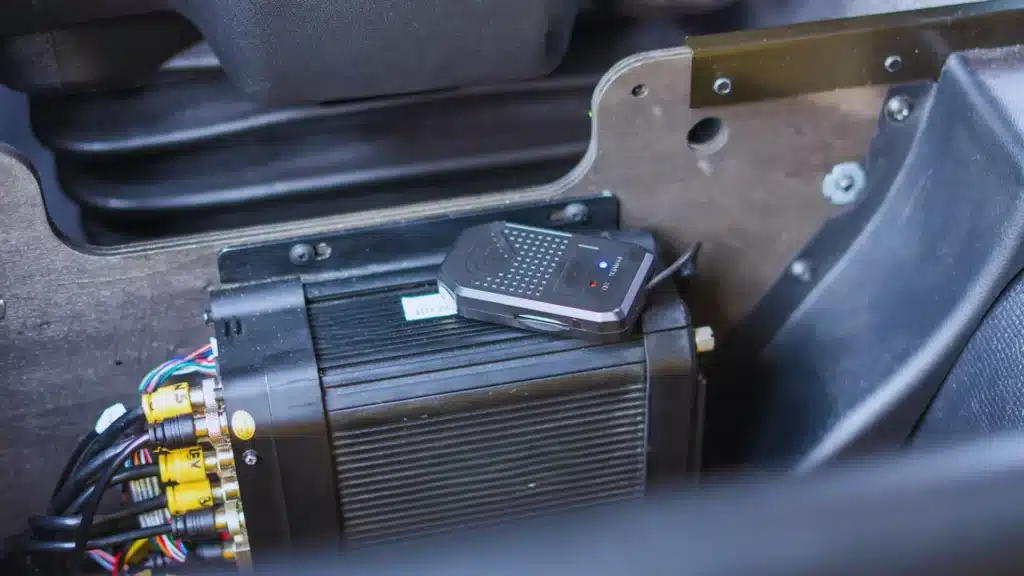
A Digital Video Recorder (DVR) records output from the various truck cameras. Depending on the storage size, operators may have access to weeks of footage. In the event of an incident, the footage can simply be rewound. Some DVRs offer remote access, allowing managers to retrieve footage without physically accessing the vehicle.
Installation of Truck Cameras
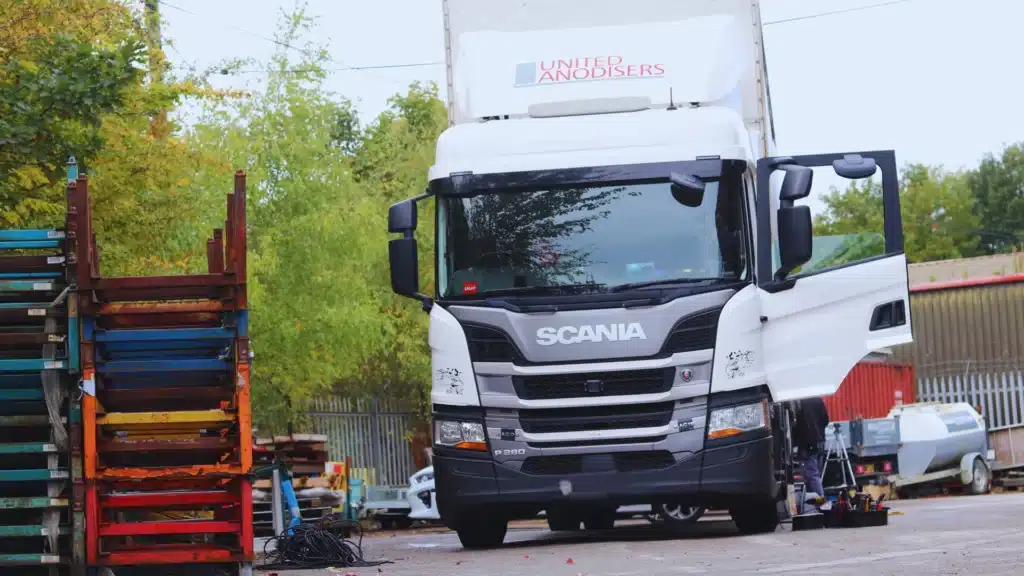
Professional Installation and Health & Safety
Installing truck cameras is more involved than simply fastening a device to the HGV cab, body or trailer. There are so many things to consider – making professional installation a must.
Location of install
Because these installations often take place on depots/sites with strict health and safety regulations, fitting must comply with the site’s protocols. For instance, areas where technicians work on a vehicle should be properly cordoned off, both to keep people away from the immediate work zone and to prevent accidental movement of the trailer. Personal protective equipment (PPE) must also be worn to safeguard those carrying out the installation.
Failure to secure the area can have serious consequences. Imagine a scenario where a technician is routing cables under or around a trailer, and a driver, unaware of the ongoing work, attempts to connect the trailer and drive away. This could result in severe injury or even a fatality. Proper signage, barriers, and communication with all site personnel are therefore non-negotiable.
Correct Placement and Calibration
Modern truck camera systems do more than simply record footage; they may rely on advanced features such as AI or driver-assistance functions (ADAS). Because of this, it is essential to follow the manufacturer’s guidelines on camera positioning. Placing cameras in the correct locations ensures optimal visibility and sensor performance. In addition, some systems require calibration after they are installed to confirm that all sensors and detection functions work accurately. Skipping or rushing this step can compromise the system’s ability to warn drivers of hazards or capture necessary footage.
Suitable Tools and Safe Working Platforms
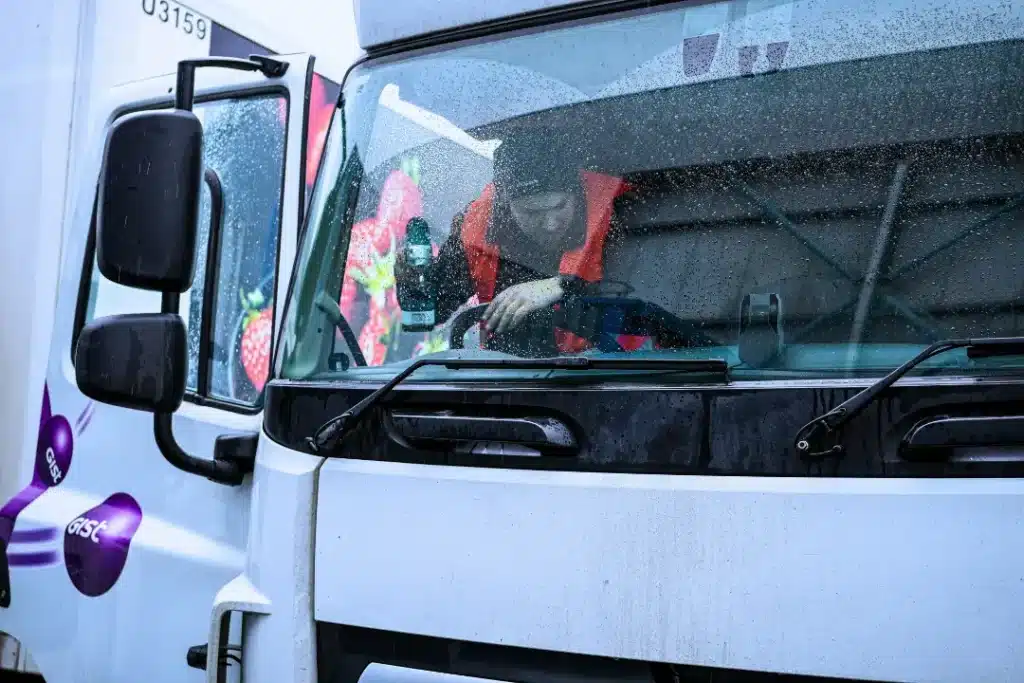
Given that most HGV cameras must be mounted above head height, especially on tall vehicles such as tippers, appropriate ladders or platforms are needed for safe access. A makeshift approach can be dangerous for both the technician and anyone nearby. Equally important are the hand tools used to secure the cameras; the right wrenches, drills, and fixings help ensure the camera units are firmly affixed and cables are routed correctly.
Routing Cables and Tilting the Cab
Preventing vehicle damage and ensuring a clean, stock like appearance require cables to be run in split conduits, in line with regulations. This typically involves routing cables alongside existing wiring looms, which reduces the risk of accidental disconnection or damage. In some cases, the HGV cab may need to be tilted to access components for DVR installation or wiring. Before tilting the cab, technicians must check that no loose parts, cables, or tools can become trapped, damaged during this process. Imagine loose coins falling onto a windshield; this could cause damage.
Integration with Existing Systems
In many installations, truck cameras must interface with additional systems such as in-cab monitors, DVRs/MDVRs, sensors, and alarms. After wiring is complete, everything should be thoroughly tested. This final testing phase involves verifying that all channels record properly, that driver-facing or side-view cameras provide clear images, and that any additional safety features (such as motion detection or audio alerts) function as intended. Because drivers are the end users, it’s best practice to give them an orientation or quick demonstration before the vehicle is put back into service. This ensures they fully understand how to operate, where cameras are located and benefit from the newly installed equipment.
Hardware Fixings and Safe Camera Installs
The choice of hardware, nuts and bolts rather than simple screws, can greatly improve both safety and durability. If a camera is only screwed onto a mudguard or other thin panel, it can create sharp edges or protrusions that cause injury to technicians during routine vehicle maintenance. Over time, vibrations can also loosen poorly secured screws, risking equipment failure. Similarly, when ties or cable fasteners are used, flush-cutting side snips should be employed to eliminate any sharp edges, preventing cuts and snags.
Why Professional Installation Matters
All of these steps illustrate why professional installation is crucial for HGV camera systems. A skilled technician familiar with both vehicle electrics and advanced telematics, will ensure that cameras are positioned correctly, cables are well-protected, and onboard systems are seamlessly integrated. In the long run, a high-quality install reduces the risk of damage, minimises health and safety hazards, and ensures that fleets can make full use of their camera technology.
At Nationwide Fleet Installations, we recommend that camera providers, resellers, and fleet operators always seek professional telematics installers for HGV camera systems. Their expertise, combined with strict adherence to health and safety requirements, guarantees that your fleet’s equipment is installed correctly, efficiently, and with minimal disruption, allowing operators and drivers to focus on what they do best.
HGV Camera Features
Digital Video Recording (DVR)
DVR or MDVR allows for storage of camera footage from multiple channels simultaneously. DVRs are rugged and designed to withstand the rigorous day-to-day use of commercial vehicles, if they were not, they would quickly be damaged and the drives ruined.
Connectivity
Connectivity is also essential for truck cameras, especially when combined with digital video recording. Examples include USB, hard drives, memory cards, apps, Wi-Fi, and 3G/4G streaming for remote access to footage. Connectivity can also extend to telematics and fleet management systems, providing integrated data.
Resolution
Resolution affects video quality, ranging from as low as standard definition (480p) to as high as 4K. Different camera positions may require different resolutions. For example, you may want a higher resolution for forward-facing and reversing cameras, but standard HD might suffice for blind spot monitoring.
Look at Other Providers
Research a range of HGV camera system providers to understand the different features currently on the market. This enables you to match specific features to your fleet’s needs. Providers will be willing to support you in this, from selecting a system to predicting ROI. Approaching an installer is also a good idea for all your technical concerns
Future Innovation
AI & Truck Cameras

AI is driving significant advancements in HGV camera systems, including better detection of vulnerable road users, improved collision warnings, and a reduction in false positives (e.g., differentiating pedestrians and cyclists from static objects like bollards). Wireless technology has also improved, particularly with telematics integration.
Video Telematics
A key emerging trend is video telematics, which combines traditional telematics data (e.g., speed, location, cornering) with camera footage, providing a more holistic picture of incidents. This helps improve driver behaviour, prevent accidents, and resolve disputes more quickly.
Contact Us
We know that the wide range of truck camera systems can raise many questions, especially regarding fitting, camera placement, and integrating multiple systems. Get in touch with us today, we can help. We have been a trusted partner for UK-based fleets and technology providers since 1995, specialising in telematics, cameras, and other vehicle technology installations and servicing. Our mission is to help our customers accelerate their installation processes, expand their geographical coverage, and focus on what they do best.


